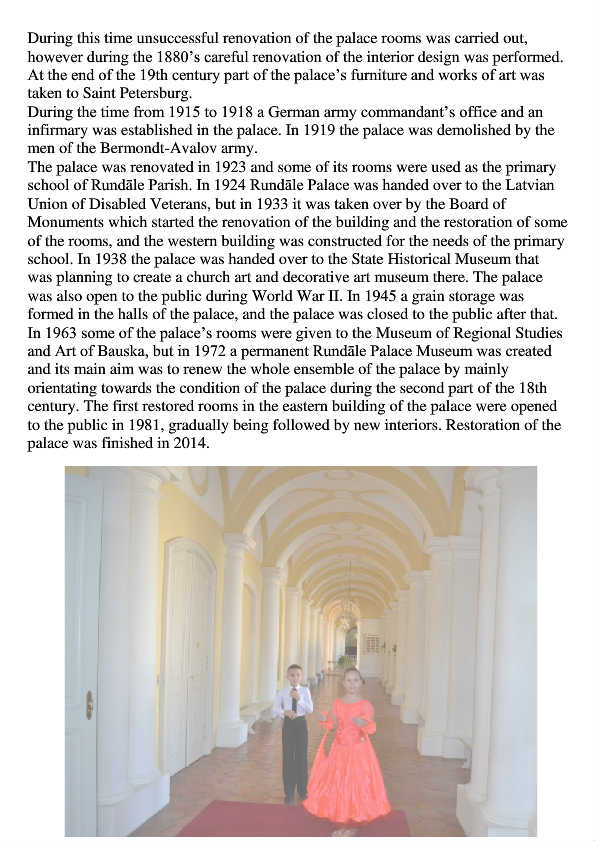Page 61 - Erasmus_2017_2020
P. 61
During this time unsuccessful renovation of the palace rooms was carried out,
however during the 1880’s careful renovation of the interior design was performed.
At the end of the 19th century part of the palace’s furniture and works of art was
taken to Saint Petersburg.
During the time from 1915 to 1918 a German army commandant’s office and an
infirmary was established in the palace. In 1919 the palace was demolished by the
men of the Bermondt-Avalov army.
The palace was renovated in 1923 and some of its rooms were used as the primary
school of undāle Parish. In 1924 undāle Palace was handed over to the Latvian
Union of Disabled Veterans, but in 1933 it was taken over by the Board of
Monuments which started the renovation of the building and the restoration of some
of the rooms, and the western building was constructed for the needs of the primary
school. In 1938 the palace was handed over to the State Historical Museum that
was planning to create a church art and decorative art museum there. The palace
was also open to the public during World War II. In 1945 a grain storage was
formed in the halls of the palace, and the palace was closed to the public after that.
In 1963 some of the palace’s rooms were given to the Museum of Regional Studies
and Art of Bauska, but in 1972 a permanent undāle Palace Museum was created
and its main aim was to renew the whole ensemble of the palace by mainly
orientating towards the condition of the palace during the second part of the 18th
century. The first restored rooms in the eastern building of the palace were opened
to the public in 1981, gradually being followed by new interiors. Restoration of the
palace was finished in 2014.

